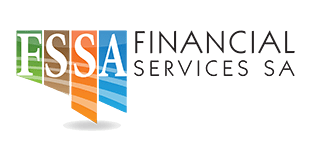November is one of the most valuable months for planning. It sits at that sweet spot between the wrap-up of the current year and the rush of Christmas. It’s time to take stock and to look at what worked well, what didn’t, and what needs to shift before another year begins.
For farming families and rural business owners, this window of time can make all the difference. Decisions made now set the tone for next season, from financial planning and resource allocation, to staff management, maintenance, and long-term strategy.
A few hours of thought now can save weeks of stress come early 2026.
Planning ahead isn’t about trying to control everything, it is about giving yourself options, understanding where you are heading, what might get in the way, and how you will respond when conditions inevitably change.
Here are ten steps to follow to help you plan for 2026.
1. Start with your “Why.”
Every meaningful goal starts with understanding why it matters. Your “why” is the motivation that keeps you grounded when things get hard and the reason you’re willing to keep showing up when the going gets tough. For some, it’s about creating financial stability; for others, it’s building a legacy for the next generation or protecting the family’s hard-earned assets. When your goals are anchored in your personal “why,” the decision-making process becomes easier.
2. Set flexible goals.
Flexible goals allow you to adapt to changing realities without losing sight of your destination. A rigid plan may look neat on paper, but life rarely follows the script. Build moments to stop, reassess, and tweak your direction as the year progresses.
3. Define your 5 W’s.
Before you start any project or set any target, ask yourself five key questions: who, what, when, where, and why. Who’s responsible? What needs to happen? When should it be completed? Where will it take place? And why is it important? Answering these questions turns thoughts into actions and helps everyone involved understand their role.
4. Reflect regularly with an After Action Review
Too often, people wait until the end of the year to take stock, but reflection is most powerful when it is consistent. Try to schedule short reviews throughout the year to assess what’s working and what isn’t. An “After-Action Review” is a simple look back to capture lessons while they are still fresh. Reflection helps prevent small problems from becoming big ones and allows you to build continuous improvement. Learning from your mistakes and apply those lessons immediately.
5. Focus on your top priorities.
Focus on the three to five projects that matter most for the year ahead. These are the ones that will make a real difference to your family, your farm, or your business. This helps prevent burnout and builds momentum.
6. Create a time budget
Take a realistic look at what each project will require. Planning your time and resources the same way you plan your finances ensures you are not stretched too thin. Running on empty is no way to get ahead.
7. Plan for the unexpected.
Contingency planning is one of the most valuable tools you can build into your business and life. By identifying potential roadblocks early, you can reduce panic and make smarter decisions when things go off script. Something will go wrong in 2026 and the question is whether it will catch you off guard or find you ready.
8. Build relationships and networks.
People around you can offer perspectives and opportunities you might never see on your own. Rural communities thrive on connection and reciprocity. When you invest in your network, you’re also investing in resilience, for yourself and those around you.
9. Protect your work-life balance.
Balance doesn’t always mean a perfect 50/50 split between work and life. It means understanding your own rhythms and knowing when to push and when to pause. The key is to align your most productive time with your most important tasks and to give yourself permission to rest without guilt.
10. Keep learning and evolving.
Celebrate your wins, but also to reflect on what they have taught you. Continuous improvement does not require huge leaps, it is about small, steady adjustments that compound over time. Focusing on learning rather than perfection, builds resilience that sustains success through the highs, the lows, and every season in between.
2026 will bring its own mix of opportunities and challenges, however, the key is to face it with clarity, adaptability, and purpose. A flexible plan is not a weak plan, it is a realistic one. When you know your “why,” keep your priorities clear, and leave room for change, you give yourself the best chance to thrive no matter what the year throws your way.
If you would like to talk about planning for 2026, or making your business more “bank ready, I encourage you to contact me on 08 8253 2906 or email info@financialservicessa.com.au.







